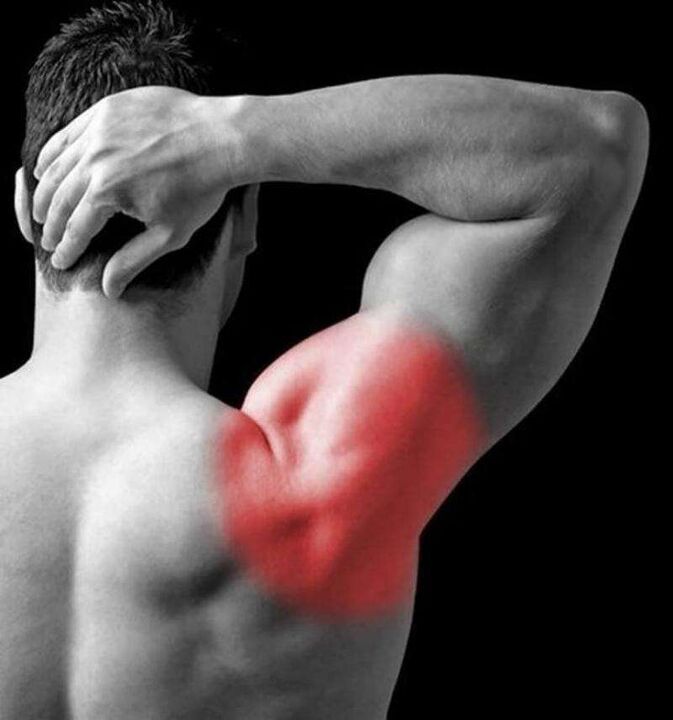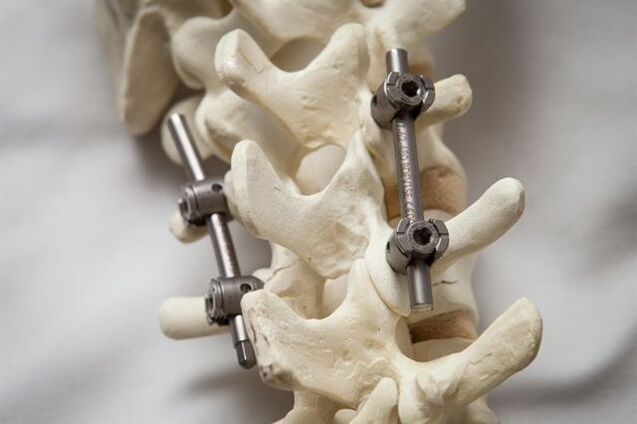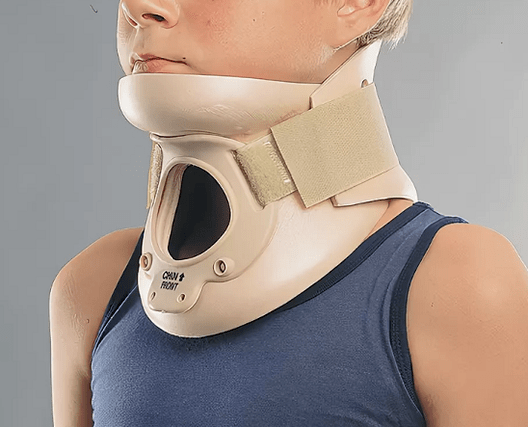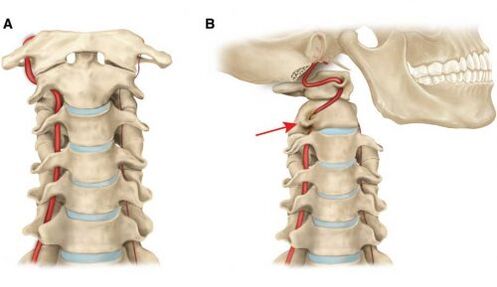Stage 2 osteochondrosis of the cervical spine requires professional treatment. With the development of this pathology, the integrity of the intervertebral discs is disturbed, and the gap between them is also reduced. Of all the forms of osteochondrosis, the cervix is the most common. The neck moves, in this case, he is always under pressure. The early stages of osteochondrosis are normally tolerated. Launched - brings a huge threat to health.
Why does osteochondrosis of the cervical spine occur?
The causes of cervical osteochondrosis are many. Pathology can develop in people who lead an inactive lifestyle. The veins pass through the vertebrae in the cervical region, supplying blood to the cerebral vessels. Osteochondrosis often occurs due to increased pressure on the neck. Grade 1 spinal osteochondrosis occurs in young and old people. It is not age that plays an important role, but lifestyle and body characteristics.
Stage 2 cervical osteochondrosis is common in adolescents. In medicine, there is the concept of "juvenile osteochondrosis". A common cause of osteochondrosis 1, 2 degrees is incorrect head position. As the disease progresses, the pulp breaks. The type of osteochondrosis depends on how large the pulp ruptures. Improper treatment of osteochondrosis of the first stage leads to the development of pathological processes. In the third stage of the disease, a degenerative-dystrophic process is pronounced: patients are more often concerned about pain in the back and neck.
First level features
With grade 1 cervical spine osteochondrosis, the pathological process extends to the muscles. The early stage is characterized by the formation of cracks in the annulus fibrosus. It is made up of collagen fibers.

Stage 1 osteochondrosis of the cervical spine leads to the appearance of uncomfortable symptoms:
- The first stage of osteochondrosis is manifested by pain in the back of the head. Some people experience swelling. With stage 1 cervical osteochondrosis, strong cramping pain may appear.
- If a person has been diagnosed with osteochondrosis of the cervical spine, he or she should visit an ophthalmologist. Pupils can be expanded.
- Stage 1 cervical osteochondrosis often causes Wright syndrome. If the patient takes his hand behind his head, the pain will increase.
- Cervicalgia syndrome usually develops at the onset of the disease. Inflammation in this case affects the muscles. The development of cervicalgia syndrome is associated with abscesses. Someone begins to feel pain in the neck, limited joint movement.
- In the first stage, anterior scalene muscle syndrome may appear, if it occurs, the subclavian artery is affected.
How is treatment carried out? The goal of therapy is to improve pulp rupture and prevent unpleasant symptoms. Treatment of osteochondrosis of the cervical spine is performed surgically. The duration of the postoperative period was 7 days. In a month or two, the stitches gradually grow together.
To ensure disease prevention, you need to wear a special collar, it is worn around the neck. Doctors recommend using a solution of calcium gluconate. This medicine can heal wounds.
What happens in the second stage of the disease?
Second -degree cervical spine osteochondrosis develops with ineffectiveness of therapy in the early stages. The inflammatory reaction becomes pronounced, the intervertebral foramen decreases.
Grade 2 cervical osteochondrosis leads to the formation of osteophytes. This is a bone process against the background of dehydration.
Stage 2 cervical osteochondrosis can last 4-5 years. The disease periodically subsides and worsens. A hallmark of this disease is falling head syndrome.
Treatment involves manual therapy. The goal is to provide the cervical muscles with normal fixation. Depending on the condition, orthopedic treatment (vertebral extension) may be prescribed. Drug therapy is required. Calcium chloride is prescribed to relieve pain. Rehabilitation gymnastics is recommended: should be given 30 minutes a day. The main load must be on the joints.
How does the third stage materialize?

Treatment of third -degree osteochondrosis is quite difficult. With this disease, the structure of the intervertebral disc changes.
Pathological processes involve tissues and joints:
- The vertebral body is torn, there are characteristic signs of an intervertebral hernia. The person begins to feel severe pain in the back, neck and limbs. Degenerative-dystrophic reactions affect most of the neck.
- Third -degree osteochondrosis of the cervical spine is characterized by vestibular disorders. Periodically, one experiences pain in the temples. Some patients partially lose consciousness.
- The danger of the disease in the third stage is that it leads to endocrine pathology. Therapy involves surgery and the use of manual techniques. In the third stage of cervical osteochondrosis, medication is not prescribed.
- The patient may have polysegmental osteochondrosis. With this disease, segments of the cervical spine are affected, shoulder movement is impaired, and pain in the elbow appears.

To restore spinal function, you need to wear a neck brace.
Disease syndrome
Cervical osteochondrosis is accompanied by the syndrome:
- Vertebral occurs when cartilage and bone tissue are involved in a pathological process. Neck mobility is impaired. If a person tries to turn his head to the side, pain appears in the occipital area of the neck. The vertebrae undergo morphological changes that can be seen on radiography. The symptoms of one syndrome are interrelated. An important sign of vertebral syndrome is morphological changes in the tissues and bone structure of cartilage. This syndrome is difficult to diagnose. A similar symptom complex is present in myositis.
- Vertebral artery syndrome is another manifestation, it can occur regardless of the degree of cervical osteochondrosis. Pathological processes affect the arteries that feed the brain. Periodically, there is a feeling of stunned. Vertigo is a symptom of vertebral artery syndrome. Blood pressure can soar, periodically there is nausea, vomiting. The nerve endings are irritated, for this reason headaches occur. With vertebral artery syndrome, fainting, oxygen starvation is possible. The disease is accompanied by the deposition of atherosclerotic plaques on the walls of blood vessels.
- Cardiac syndrome is manifested by pain in the sternum. Rapid fatigue and decreased performance were observed. The heartbeat becomes fast. Diagnostics involves angiographic and functional tests. Radicular syndrome is associated with damage to the spinal cord. It is one sided. With radicular syndrome, neck pain is observed, combined with paralysis.

It should be noted that osteochondrosis causes damage to a large number of vertebrae.
What is osteochondrosis of the thoracic region?
Osteochondrosis of the thoracic spine is detected in young and old people: age does not matter. Pathology leads to degenerative-dystrophic changes in cartilage and bone structure. Late treatment involves violations of the structure of ligaments, joints, intervertebral discs. At a later stage, thoracic osteochondrosis leads to destruction of the intervertebral disc.
Complications of this disease can be:
- pneumosclerosis;
- infertility;
- malignant formation.
If the disease develops in young people, premature aging of the musculoskeletal system is observed. The structural and tissue function of cartilage is significantly impaired.
Delivery and clinical reasons
- With the development of this pathology, chest pain appears. They occur in a calm state and while driving. Unpleasant sensations increase after lifting weights, sharp turns.
- The disease is manifested by squeezing in the back. Breathing is disturbed due to this problem.
- Concussions may occur.
- Some people complain of peeling of the skin, thinning of the nails.
The disease is associated with pathological reactions to the intervertebral disc. It can be inherited. The predisposing factor is the defeat of the intervertebral disc. In some people, the disease is diagnosed with a background of osteophytes. The reason may be less physical activity or conversely, physical inactivity.
Therapeutic activity
If there are no neurological symptoms, complex treatment is still required. Therapy cannot be delayed, otherwise destruction of the intervertebral disc will occur.

Before starting treatment, a diagnosis should be made. If a person has identified at least one of the above symptoms, he or she should see a neurologist. The doctor will take the anamnesis, examine the thoracic area. Palpation revealed a herniated disc. If the doctor finds out, he or she will order additional examinations. Radiography is required. The MRI procedure allows you to examine the musculoskeletal system and identify neoplasms.
Treatment depends on the degree of breast osteochondrosis; it begins after the diagnosis is confirmed. Doctors prescribe medications that help relieve pain and restore the function of the musculoskeletal system. For the treatment of this pathology, injections, physiotherapy, physiotherapy training are required. Additional procedures - magnetotherapy, vacuum therapy, physiotherapy exercises.
Daily exercise has a complex effect on the body, improving the function of the musculoskeletal system and respiratory system. Massage reduces pain severity, improves muscle tone, relieves fatigue, and improves blood circulation in tissues. This procedure is performed by an experienced specialist.
In conclusion
How many years can you live with osteochondrosis of the cervical and thoracic spine? The pathology is not life -threatening, but the symptoms cause severe discomfort. The clinical picture of the disease can change: it all depends on the effectiveness of therapy.














































